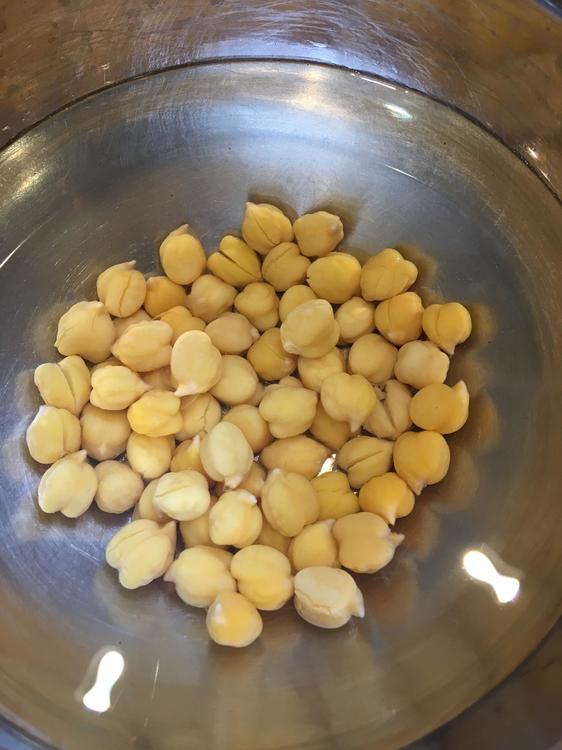Here we are five years after the last post here, but perhaps with a useful tip.
Chickpea skins can be loosened by attacking the skin-to-bean bond with an alkaline solution. About half of the skin is made of pectin which can be substantially weakened by a hot solution of baking soda. If you just want to make the skins soft (as opposed to trying to remove them) cook the chickpeas in a solution of 1/4 teaspoon of baking soda per cup of water. When you boil the water, most of the CO2 from sodium bicarbonate boils off which increases the amount of carbonate in solution relative to bicarbonate and increases the pH from around 8 to around 9. More baking soda produces a more pronounced effect but also affects the flavor. When done cooking you will find whisps of skin floating in the cooking liquid, but if you make it into hummus the skins will totally disappear (I use an Indian wet grinder to make hummus and the result is totally creamy after 40 minutes between the stones).
If you want to remove the skins completely and not just soften them, first hot soak the dry chickpeas for 15 minutes (boil water, add dry chickpeas - water should fully cover the chickpeas by 1/2" - put on the top, turn off the heat and wait 15 minutes). Then boil the chickpeas in a solution of 1/4t of baking soda per cup of water for 5 minutes. Strain and chill in cold water. Using your fingers slip the skins off of the chickpeas and flush them out of the pan/bowl. Repeat the rinse about 6 or 7 times to get all of the skins. Soak the now skinless chickpeas for at least 8 hours (up to 12). Now you can steam (20 min for average size chickpeas), boil, or pressure cook the chickpeas to whatever level of doneness you desire (times will depend on the size and age of the chickpeas and how long you soaked them after removing the skins). Done right, I have found that this will result in splitting about less than 5% of the chickpeas in the process.
I observed that going directly to boiling dry chickpeas in soda water resulted in the skins tending to come off everywhere except around the little beak at the top of the chickpea and it often left a strand of attached skin running half way around the bean that was removable but was too much trouble. This behavior stimulated me to try a hot soak before introducing the soda. I first tried 10 minutes which was not enough to make it easy to get all of the skin off. High soda concentrations tended to completely break down the skin everywhere except around the beak area where I wanted it to come clean. The solution (no pun intended) was to drop the soda concentration down to 1/4t per cup which softened the skin but did not completely dissolve them. As a result, when you rub the bean or squeeze it between your fingers, the skin comes off as a single sheet, pulling with it the skin around the beak so that everything is then clean. If I further increased the hot soak time to 20 minutes I found that the chickpeas tended to split more often (up from 2-5% to 10-15% when the skins were rubbed off), so this is an area where somebody else may be able to improve this process.
The range of soda concentrations is between 1/8t per cup and 1t per cup of water and the boiling times range from 2 minutes to 8 minutes so run a few tests to decide where you want to operate. Since you hot soak the chickpeas before you boil them and rinse them after you remove the skins and before you eat them, the amount of sodium in the baking soda is not anything you should worry about. You will put more sodium in when you salt them than will ever find its way into the chickpeas in the de-skinning process.
Photo is of peeled chickpeas soaking in room temperature water.



